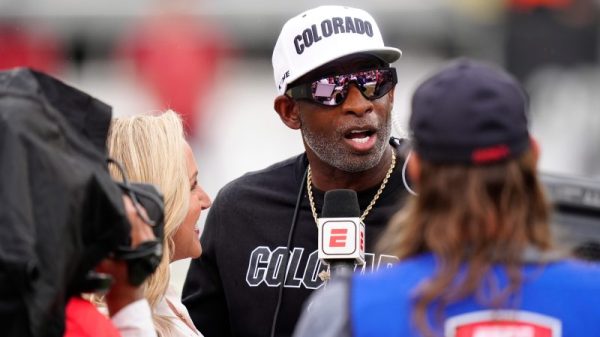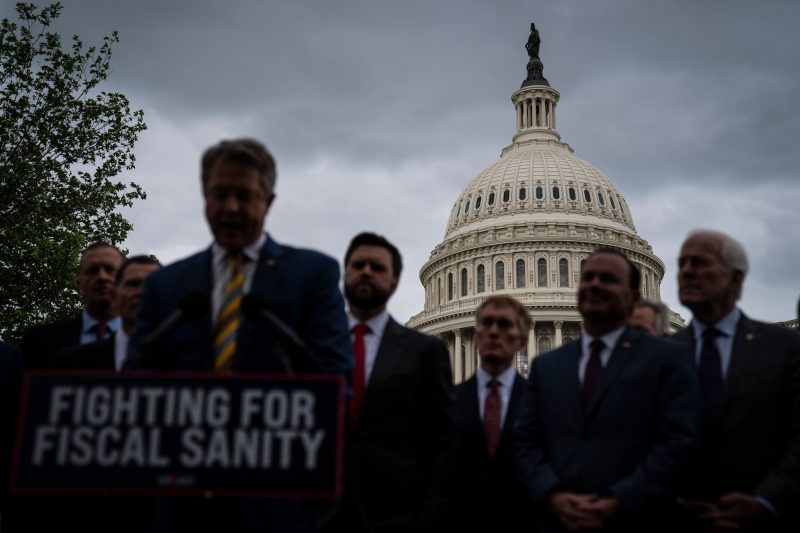Sen. Catherine Cortez Masto paused at the question, wondering if she ever faced political fallout for voting multiple times to raise the federal debt limit.
“Did they ever use that, in an ad? Not that I can recall,” the Nevada Democrat said of a campaign that saw more than $150 million worth of advertising.
Sen. Raphael G. Warnock (D-Ga.) couldn’t remember any of those ads either. “That I voted to raise [the limit]? I don’t know,” Warnock said, confessing that he didn’t see all $375 million worth of ads that aired during his campaign.
And Sen. Mark Kelly (D-Ariz.) had the same reaction. “No, I’m pretty certain that that was not a thing,” Kelly said.
Cortez Masto, Kelly and Warnock ran in three of the five most expensive Senate races of 2022, with roughly $900 million spent by all candidates and their allied outside groups, according to one estimate.
And their debt ceiling votes played no role in their successful reelection campaigns.
Someone needs to tell members of Congress: The debt ceiling boogeyman doesn’t really exist.
It might help them honestly confront the issues of how to handle the rapidly rising $31 trillion debt, without the over-the-top stakes of one side holding the other politically hostage. In reality, it’s an almost perfunctory vote every 18 months or so that carries very little political risk but could also lead to incredibly horrible consequences if Congress lets the nation default on its debt.
In recent years, Republicans have craved the role of hostage taker, believing they can extort a Democratic president into giving into their demands to rein in spending and address the long-term issue of debt. And Democrats have inexplicably cowered at the social-media-cable-news-driven fear that the public cares about the debt ceiling vote.
Yet despite repeated examples that neither of those outcomes ever happens — it’s almost impossible to find a congressional career that ended over the debt limit, and these negotiations rarely reduce spending — Congress keeps wrapping itself in knots.
This is the eighth time in 12 years that the issue has landed in the Capitol, in part because lawmakers are so afraid that when they do extend the borrowing authority, it’s only in small increments to last a year or two before Treasury hits the next ceiling.
This panic is important because for almost two years Democrats had multiple opportunities to eliminate the debt ceiling issue — or at least punt it beyond even a potential second term for President Biden — but quite a few Democrats told leadership that they worried about the political look of increasing debt as they pursued a bold domestic agenda.
Some Democrats remain disappointed that they dropped the ball in 2021 and 2022.
“Letting people know that you voted to make sure that the economy did not tank and that Uncle Sam paid his bills on time is more than defensible, in any debate or at the ballot box. But that’s my perception and I don’t know if that’s the perception of 50 or 51 Democrats,” Sen. Chris Van Hollen (D-Md.) told reporters Wednesday.
“Just idiotic,” said Rep. Brendan Boyle (Pa.), the ranking Democrat on the House Budget Committee. “It’s time to finally rip off the Band-Aid once and for all.”
Boyle and Van Hollen, a veteran of debt ceiling wars from last decade, are two of the leading voices to abolish the debt ceiling law, the first version of which was created during World War I as a means to make it easier for the Treasury to pay debts. The current debt ceiling has been in place since roughly 1940.
The data shows how naive those Democrats were to worry about voting on what voters see as an obscure, procedural issue, just as Republican fears of facing conservative primary challenges based on this vote are unfounded.
AdImpact, which tracks and analyzes campaign spending, searched all of the ads run in House and Senate races during 2021 and 2022 for the terms “debt,” “debt ceiling” or “debt limit.” The independent firm found less than $9 million in ads mentioning those terms.
This is a tiny fraction of the advertising in last year’s campaigns. The 25th most mentioned issue — voting rights — had almost $50 million in ads backing it. Taxes, abortion, crime, inflation and character were the five biggest topics, all with more than $250 million worth of ads mentioning them, AdImpact found.
Most of those debt ads didn’t actually mention the supposedly controversial vote. Sen. Michael F. Bennet (Colo.) was the only incumbent Democrat to face ads mentioning the issue, according to AdImpact. It came in fleeting, split-second mentions of how his opponent would “cut the debt” or how Bennet had allowed “trillions in debt.”
Bennet won by almost 15 percentage points, his biggest victory ever.
On the GOP side, no one should have been a riper target then Sen. Lisa Murkowski (Alaska), who took the contorted path of voting to allow Democrats to pass the $2.5 trillion hike in debt in December 2021 without having to clear the filibuster. She then opposed the actual vote to lift the debt limit.
She faced a conservative challenger on her right flank, who never ran an ad critiquing her vote to allow Democrats to raise the debt. Murkowski won her fourth full term by a comfortable seven percentage points.
In 2014, a dozen Republicans voted to clear a filibuster so that Senate Democrats could then pass a debt ceiling lift, including seven GOP senators who faced primary voters within the next two years.
All seven won their primary. Senate Minority Leader Mitch McConnell (R-Ky.) cast that vote nine years ago knowing he already faced a wealthy conservative in the 2014 GOP primary.
“Mitch McConnell betrayed conservatives,” an announcer said in an ad quickly produced after that vote.
The issue quickly faded, and McConnell won his party’s nomination by more than 25 percentage points.
In late April, a conservative group allied with House Speaker Kevin McCarthy (R-Calif.) launched a six-figure ad campaign running on websites in 11 Democratic districts, criticizing them for voting against the GOP plan to try cut spending by $4.8 trillion in exchange for a brief lift of the debt ceiling.
That amount on an ad buy is a pittance for what will be campaigns that all cost in excess of $10 million next year, and that same group, American Action Network, moved off the debt limit vote this week and launched new digital ads focusing on energy production.
Democrats who ran in 2022 have a lesson for those facing reelection next year: go on offense, accuse Republicans of threatening to tank the global economy.
“They don’t understand what that means,” Cortez Masto said of voters views on the debt ceiling. “What they do understand, though, is a default, and they do understand — whether you’re a business owner or you’re a family — you have to pay your bills — that when you incur obligations, you got to pay those obligations. And if you don’t, there’s consequences, sometimes devastating.”
Sen. Jon Tester (D-Mont.), running next year in a deep-red state, wants Congress to look at reining in costs, but he’s also ready to jettison the debt ceiling as that vehicle.
“I think it’s important that we take a look at the debt and deficit,” Tester told reporters, “but if it means putting our country into turmoil every time it comes up, we got to figure out a better way to do it.”
In fact, of the last seven debt showdowns, just one produced a real plan to cut costs, the 2011 Budget Control Act. Yet eight years later, in a debt ceiling deal negotiated by the Trump administration, Congress broke the BCA’s spending caps by about $320 billion, ending the 10-year law without nearly as much savings as its original plan.
Boyle feels as if almost every Democrat finally realizes this issue only allows Republicans to hold Democratic presidents hostage. But he still laments that Democrats didn’t act on their own two years ago and at least lift the debt ceiling so high that it wouldn’t be an issue the rest of Biden’s presidency.
Instead, Democrats did the piecemeal approach. Less than 17 months after that last vote, Congress is back in the same debt limit box, unsure how to avert fiscal catastrophe.
“It’s no gain and all potential pain,” Boyle said Friday, “and for an issue that never ends up being part of our political campaigns.”



























